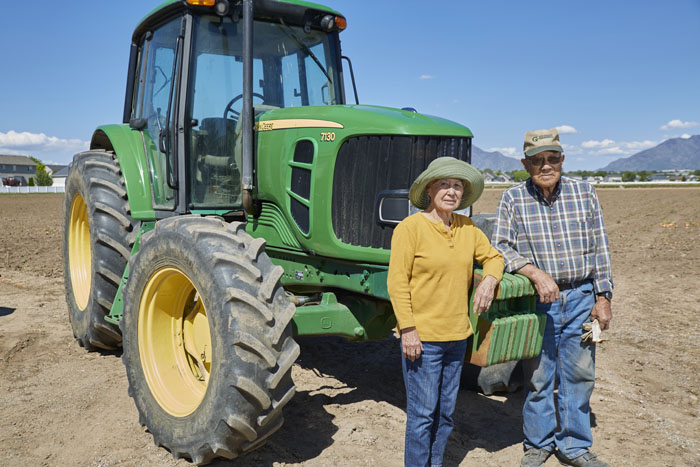
Miya’s Farm is situated in the middle of a Clearfield, Utah, residential area, but the urban farm wasn’t always so… urban. Renie Miya remembers when his family farmed 350 acres of land throughout Davis County before relatives sold their portions of the Miya family farmland. Miya’s farm is now about 40 acres. Over the years, Renie has seen surrounding farms come and go, and witnessed urban development encroach upon the edges of his farm. While other family members moved into different career fields, Renie carried on the family business.
Renie always knew that farming was in his blood. His grandparents were among many Japanese immigrants who came to Northern Utah to farm. “Something interesting,” he says, “is that ours was one of the few not taken by the government when newcomer Japanese immigrant farmers were sent to internment camps during the Second World War.”
Maintaining the farm is not something Renie takes lightly. He buys the best seed to raise the farm’s most popular crop, sweet corn. However, farming is a career constantly rocked by the shifting landscape of fickle consumers and unfair pay.
“Many people don’t want to pay much when it comes to what goes in their stomachs,” says Miya, “They will complain about paying $5 per dozen for corn at my vegetable stand. During Halloween, I sell cornstalk bundles for $4 per bundle for people to decorate with, and a customer will buy multiple bundles, no problem. So the food I sell is too expensive, but nobody complains about the price of their decorations.”
It’s a small example of the evolving mindset towards how shoppers prioritize their purchases. When it comes to owning and operating a farm, Miya says growing overhead costs negatively impact interest in farming as a career path.
“There is so much overhead, yet most produce prices haven’t changed in 20 years. For example, in 1976, a 50-pound bag of onions reached an all-time high of $10 per bag wholesale. That’s awesome. In the same year, 1976, my family bought a brand new, 125 horsepower John Deere tractor for $25,000. But, in 2013, a 50-pound bag of onions went down to about $3.50 per bag wholesale. In the same year, a brand new John Deere tractor cost $180,000. How do you explain that?”
 It’s the problem that many farmers don’t seem to have the solution for. Despite the unpredictable pricing structure of the wholesale market, Renie finds a lot of success selling direct-to-consumer from his vegetable stand. Huge ears of sweet corn and other lovingly grown vegetables grace the stand starting in mid-July. In October, he transforms his corn field into a haunted maze to support a local elementary school fundraiser.
It’s the problem that many farmers don’t seem to have the solution for. Despite the unpredictable pricing structure of the wholesale market, Renie finds a lot of success selling direct-to-consumer from his vegetable stand. Huge ears of sweet corn and other lovingly grown vegetables grace the stand starting in mid-July. In October, he transforms his corn field into a haunted maze to support a local elementary school fundraiser.
He’s a testament to upholding legacy and values in the face of hardship. Despite lung issues (he is currently on the University of Utah transplant list), Renie is still involved in daily operations and stays positive for the future of Miya’s farm.
“My nephew will be the 4th generation in the Miya family to take over this farm,” he says proudly, “and I’m excited to see how he comes in with his ideas and runs the business.”





